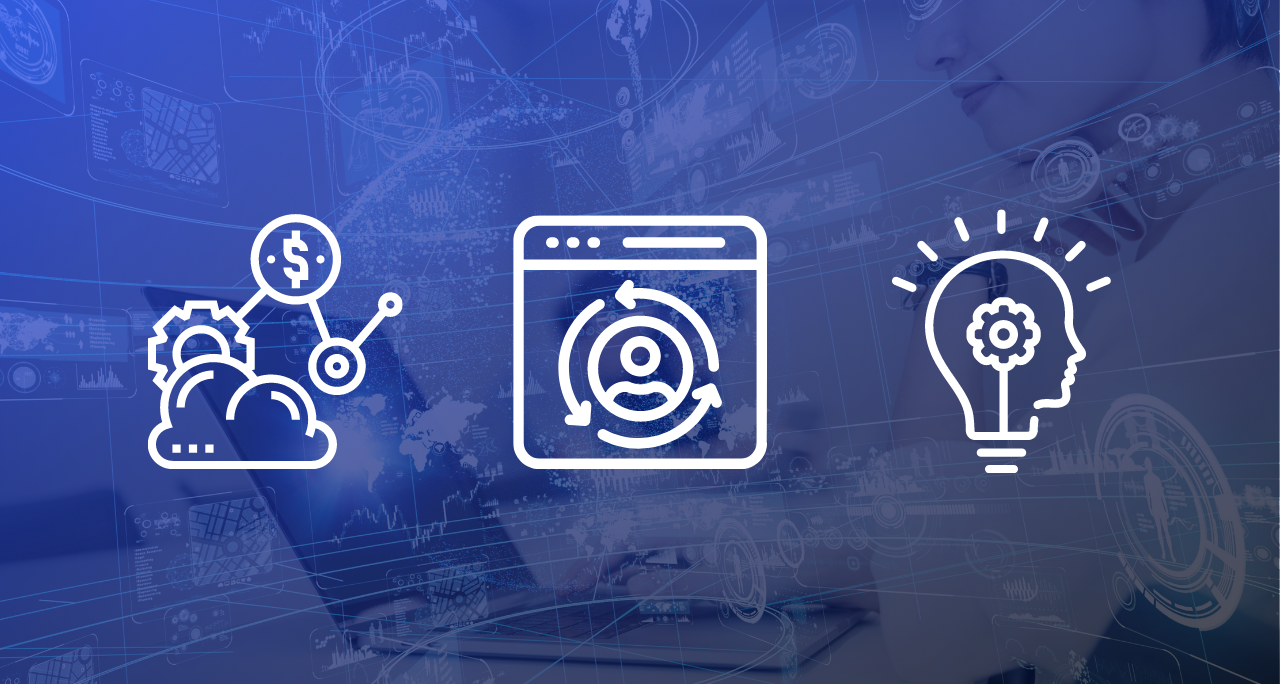Updated in December, 2021
For eCommerce businesses today, customer success depends not only on growing your customer base but also on nurturing customer loyalty, and the latter priority is especially important for any subscription-based company. Everyone wants to gain new accounts, but implementing marketing strategies that actually succeed becomes more expensive and difficult if a large number of the customers you acquire end up leaving. With recurring revenue businesses, high churn rates can seem like a losing battle.
Customer churn usually takes place when your subscribers fail to achieve the promise of your product, have a poor experience with your service, or no longer need or cannot afford to pay for your product or service.
Naturally, the churn rate of your business has a direct effect on your revenue, profit margins, and, ultimately, on your entire business.
Fortunately, there are proven steps you can take to prevent voluntary churn.
What is Voluntary Churn?
Voluntary churn happens when a customer decides to stop using your product or downgrades from a paid version.
Chartmogul has actually identified two more types of voluntary churn:
- Happy churn takes place when the customer has finished using your product for their campaign or task and cancels their subscription, despite their positive experience. A good way to identify the happy churners is by looking at the percentage of canceled accounts that have been reactivated at a later date.
- Fake churn – or churn that isn’t really churn. It applies to subscribers who take advantage of a 30 or 60-day money-back guarantee policy. Separating out the users who fit into this category is usually easy because there is a different dynamic going on that isn’t representative of a typical long-term user who decides to cancel.
Can You Predict Voluntary Churn?
Voluntary churn can indeed be predicted by many factors, such as geography and industry, who your customers are, whether your offerings are premium or low-end and if they are monthly or annual, and so on, but establishing benchmarks is the key that will help you focus on what is the most critical.
Another way to estimate your potential churn is to explore how engaged your customers are by establishing and measuring your KPIs.
You can also predict voluntary churn by closely watching your customer’s account updates. Indicators that should catch your attention are switching off notifications, changing to manual renewal, or removing payment data.
How to Prevent Voluntary Churn
Preventing voluntary churn requires the right combination of product engagement, customer experience, and perceived value. If customers don’t use your product often enough, don’t have a good experience when they do, or don’t see value in your product, they won’t stick with you. This is true whether you’re talking about free trial users considering a paid upgrade or paying customers deciding whether to renew.
There are countless ways to reduce voluntary churn and boost your revenue and customer loyalty. In this post, we’ll cover some proven tactics to reduce voluntary churn and help increase your recurring revenue. These include cancel flows, tracking pre-cancel events, collecting feedback, and shifting customers to auto-renewal.
Bonus: Check out these best practices to reduce involuntary churn and increase customer retention.
Read on for more insights into how you can reduce customer churn and keep your user base around for the long term.
Encourage Your Customers to Auto Renew
Auto-renewal is a billing model where your customer’s payment details are charged automatically at each billing interval, without requiring them to take any action – as opposed to manual renewals, where the customer renews the subscriptions themselves.
Auto-renewal is an important weapon in the war against churn because it benefits customers and companies alike, while leaving the customer in complete control. They can choose to disable the auto-billing at any point in time, without needing to cancel the subscription altogether. Transitioning your manual renewal customers to auto-renewal subscriptions can ultimately boost your bottom line and significantly decrease your voluntary churn rate.
Try to market auto-renewals as benefits, not features, that offer convenience to customers, letting them enjoy uninterrupted service without worrying about losing access to your product, including their stored preferences, tasks, projects or other account information, or re-enter payment details after a subscription ends. It’s also an effective way to keep customers on board and increase their lifetime value for your company.
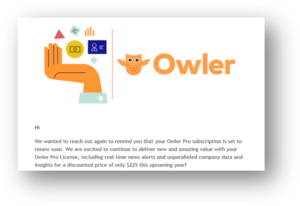
Generally, auto-renewals have a higher authorization rate, increased Customer Lifetime Value (CLTV), and usually result in three times greater customer retention. As an example, monthly auto-renewal plans incur an average of 1% customer churn rate, while monthly manual renewal plans can see as much as 70% voluntary churn.
In the case of some vendors, the churn rate of customers that are using manual renewals can get higher and higher after each billing cycle. For example, if you have a 40% churn rate for manual renewal customers after the first billing cycle, that could reach 50% for the second billing cycle, 60% after the third one, and so on. One way to combat this is by doing an analysis based on the question: “After how many renewals does churn rate start to increase?” Based on this type of analysis, you can set a billing cycle threshold and start sending promotional emails to your shoppers when they’ve reached that set threshold.
The real-world experiences of hundreds of software companies can tell us a lot about the advantages of auto-renewal for vendors. In some cases, the automatic renewal rate is four times the manual renewal rate, clearly reflecting the advantages of auto-renewal as a tool for keeping customers around.
One example is Absolute, who found that its Customer Lifetime Value (CLTV) more than doubled for its standard product and nearly quadrupled for its premium product with auto-renewal compared with manual renewal, further demonstrating the effectiveness of the approach as a way to strengthen customer value.
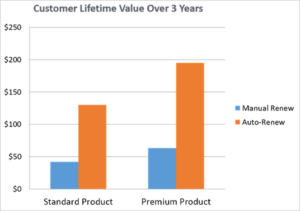
Some of the tactics you can use for subscription enrollment, encouraging customers to shift from manual renewal to auto-renew, include email offers, in-product messaging, offers in MyAccount (customer portal), and customer support and migration campaigns. The most effective approach of all may be to combine messages and offers across channels.
In-product messaging, such as a system tray pop-up or real-time messaging, should not only remind users about their upcoming expiration, but also include an attractive offer that matches all of your other communications. Taking action early on, with an email campaign that starts as many as 180 days before expiration, can help lock in an attractive discount and result in long-term loyalty of customers who turn on auto-renewal.
Aim to enroll your users in recurring programs and capture those who haven’t enrolled using various tactics, such as incentives. Incentives are important, as only about 2% of customer portal users activate auto-renewals without them, so it’s clear that finding the right offer is necessary for increasing conversion.

For further churn prevention, try building reactive retention campaigns that are designed to retain customers who want to disable auto-renewal by offering appealing offers. Discounts can be offered on the next renewal price, on all the billing cycles, or for something in between, for a certain number of upcoming cycles and so on.
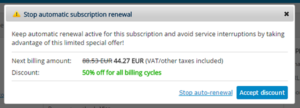
Across multiple customers, this type of churn prevention programs has been seen to convert 6.5% of the time, growing revenue by around 4%!
Send Renewal Reminders Correctly
The timing and frequency of your renewal reminders are important. Best practices dictate that you segment messaging based on renewal status.
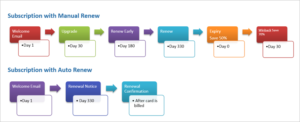
Reminder emails for manual renewals could be sent at 30 days, 7 days, or even just 1 day before expiration, and they should all include consistent offers and special discounts for enabling auto-renewal. You can even take action early with a reminder email campaign that starts 180 days before the expiration date to lock in longer-term loyalty.
Another idea is to build discount campaigns that apply to all or even specific upcoming recurring charges of a subscription plan and target certain customer segments with discounted renewal prices. When doing so, make sure to offer specific discounts early, before their subscription is due to be renewed.
At the same time, keep in mind that notifications for automatic renewals should be simple and effective. We recommend including at least one notification before the expiration date. This is in line with the strategy of giving the customer the perception of control and showing them that you care. Should they not want to continue with your service, automatically renewing without notifying them will only create frustration and will increase your refund and chargeback rates. On the other hand, a transparent and honest practice will build trust and decrease churn.
Provide the Option of Pausing Subscriptions
Around 10% of customers that are canceling their subscriptions may simply prefer to pause their subscriptions, if it was an option. This usually happens when your customers want to temporarily stop the subscription to minimize their expenses, are using your product less frequently, or lack access to your service for a limited time.
Therefore, another good way to reduce your voluntary churn rate is to provide your customers with the option to pause their subscription. This also offers your customers a convenient way to resume their subscription when the time comes, without having to perform the tedious manual action of logging into their accounts and renewing. This can also work well with happy churners, once you have identified them.
Offering a pause option to your subscribers can also help you gather valuable insights on why your customers want to discontinue, and can help you reduce your marketing costs to win them back. In the end, it is likely to lead to increased customer satisfaction because it will be easy for them to return to the services they like, and it is likely to also lead to overall increased revenue for your business.
Using Cancel Flows to Keep Customers
Customers prefer to feel they’re in charge of their accounts and can choose to leave when they want to. It may seem counterintuitive, but be sure to incorporate “cancel flows,” or clear paths within your applications and customer portals that give customers the option to cancel your service. At the same time, however, you’ll want to remind them of the great services and growth opportunities (not to mention possible discounts) they will miss if they leave.
When customers can easily find a clear exit path, they are less likely to feel trapped, and will also see that you’re confident in your product and focused on treating your customers right, which builds more trust. Then, offer the right incentives to customers so they want to stick around. Some of these incentives might include:
- Offering free “trial” upgrades for a predetermined period of time
- Discounting upgrades to reward loyal customers
- Offering discounts for converting to a recurring billing plan for more convenience
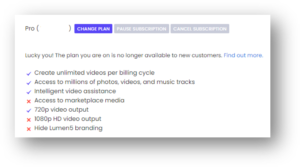
You might think that you’ll only lose money with cancel flows, but they’ll cost less in the long run than combating negative feedback posted online by customers who’ve struggled to cancel your service.
Track Pre-Cancel Events
Ultimately, it’s all about timing. In order to fight customer churn, you must find a way to analyze past events and predict your revenue stream well into the future. This means using better tools to detect exactly what behavior your customers exhibit before they decide to cancel their subscriptions.
Here are some hints of what to look for in terms of cancellation warning signs:
- Customers who go silent and stop logging in regularly
- Customers who constantly seek help and start to complain that their questions aren’t being answered
- Customers who provide feedback on features they want you to add, but don’t feel like their requests are being addressed
- Customers who just decide not to update their payment details
No matter what the specific pre-cancel behavior is, you can start to address it once you identify patterns.
Test and Optimize your Shopper Support and Renewal Processes
Sometimes, the renewal process might be more complicated for your customers than you think. If this is the case, higher churn rates instead of increased renewal rates may result. In order to avoid this, don’t just rely on what you think might work for your customers, but instead try to perform tests on renewal notifications (templates, timelines, prices), renewal emails, migration campaigns and more to see what actually works, and what doesn’t.
You might also want to take a quick look at your shopper support flows, and optimize those, as well. Consider whether getting back to customers takes more time than it should and how easy it is for them to contact you. Letting customers know that they can reach you anytime to ask about renewals (or anything else) can be a very important influence on their decision to renew.
One of the software companies we work with was able to reduce voluntary churn and boost renewals with a combination of approaches:
- Modifying shopper support flows grew customer retention by 50%
- A/B testing on renewal notification elements such as templates, timelines, and prices decreased chargeback requests and refund rates
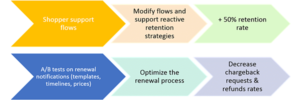
Collect Feedback—and Act on It
To reduce voluntary churn, you can’t just make assumptions about why people want to leave your brand. You have to figure out exactly what these customers needed and didn’t get from you. If you give customers a chance to talk and are willing to listen, they’ll tell you what is truly important to them.
Demonstrating interest in what your customers have to say builds trust. Using customer surveys and follow-up emails effectively can turn cancellations into opportunities for improvement. By asking your customers for feedback, you’ll create goodwill with your base and demonstrate your commitment to their satisfaction – building the loyalty that is so key to retention.
No matter how attractive it may seem to be, sometimes even a major discount won’t win over all of your customers to auto-renew. If you have customers who want to disable auto-renew, you should make it easy for them to do so, and even manual renewal is still better than churn.
When customers cancel auto-renewal despite your best offers, make sure to survey them to find out why they’ve made that choice. Their feedback can help you redesign your product and programs to keep customers in the future.
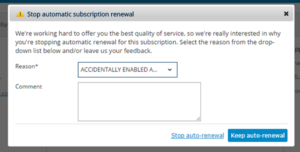
Here are some questions you could ask in your customer survey:
- What is the main reason you decided to discontinue using our services?
- How can we provide better communication and customer support?
- Could you please share any other comments or concerns so we can build a better relationship in the future?
By taking a closer look at your customers’ responses, you will get closer to finding a solution that will encourage them to stay on board or to come back if they’ve already left. At the same time, you will have more insight on how you can improve your product. This allows you to fine-tune your services or capabilities and reduce this voluntary churn rate in the future.
Hidemyass recovered 6.1% of cancellation attempts by surfacing the right offers, and with exit surveys, they can track cancellation reasons to see the effect of certain changes they made.
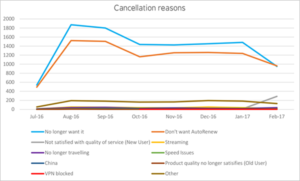
Adapt Your Churn Prevention Tactics to the User
In addition to making it easy to cancel and listening to feedback, there are many effective churn prevention strategies that focus on the user. Consider usage-based targeting; cohort analysis (which looks at your customers in relevant groups, rather than treating everyone as one unit); and customer segmentation as ways to determine which customers are most likely to use your product, as they are likely your biggest advocates while also being your most “high-risk” clients.
Calculate the potential post-retention profit you’ll generate after accounting for the incentives you offer each segment in order to retain them. For example, for high-risk/low revenue customers, you may offer no incentives for them to continue using your product; on the contrary, you may want to deliberately off-board them in some particular cases when keeping them may hurt your business. For client segments that fit your ideal customer profile, you will want to offer more incentives to encourage them to stay.
In Conclusion
Whether it’s creating cancel flows, collecting feedback, or converting your customers to auto-renewal, there are many tactics you can employ to combat that dreaded enemy, voluntary churn. The secret is to test them out for yourself and see which ones suit your subscription business the best.
Are you currently using any of these tactics to reduce voluntary churn? Leave us a comment below and let us know how they work for you!
In the meantime, you can check out our eBook on How to Maximize Recurring Revenue and Grow Your Subscription Business for more insights into churn prevention tactics.

